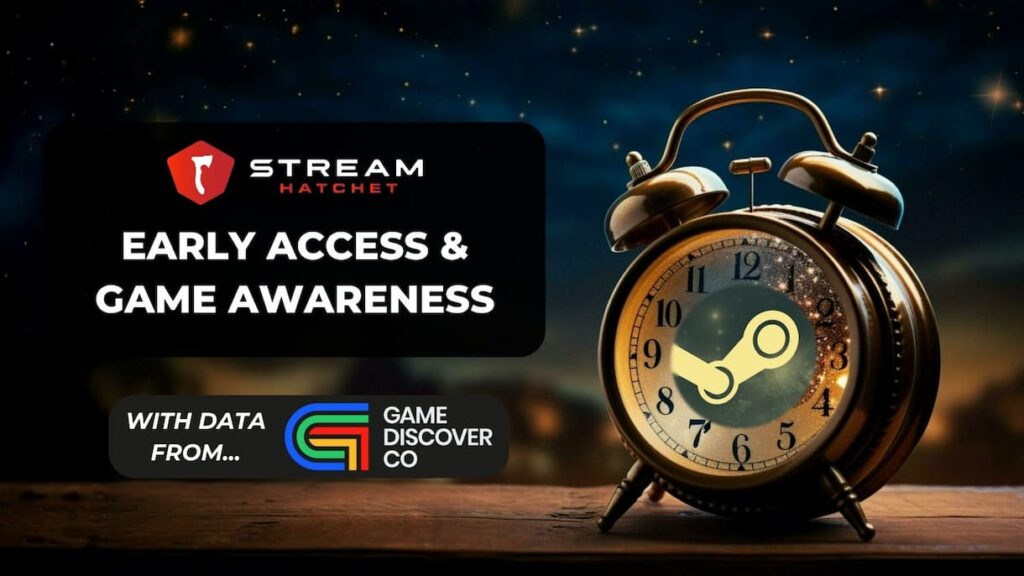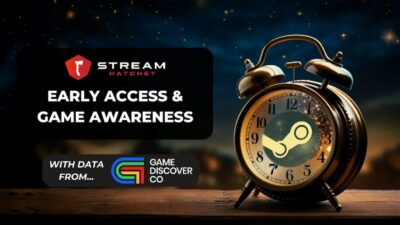Live streaming exists in an interesting space. While people turn to live streaming for entertainment, comfort, and a sense of stability, holidays can completely disrupt viewing habits. More availability could mean more free time for viewers to tune into their favourite streamers in much the same way as people play more games during the holidays. Alternatively, the abundance of free time and IRL activities could pull viewers away from live-streaming platforms. Previously, we explored a similar effect generated by different seasons where viewing patterns changed dramatically from summer to winter.
In this article, we’ll be looking at how live-streaming viewership changes during key holidays on the U.S. calendar, before delving deeper into the so-called “Q5” period around Christmas and New Year’s for 2024 to discover what events still have the necessary pull to keep viewers online.
Holidays Typically Drop in Live Streaming Viewership… But with Key Exceptions
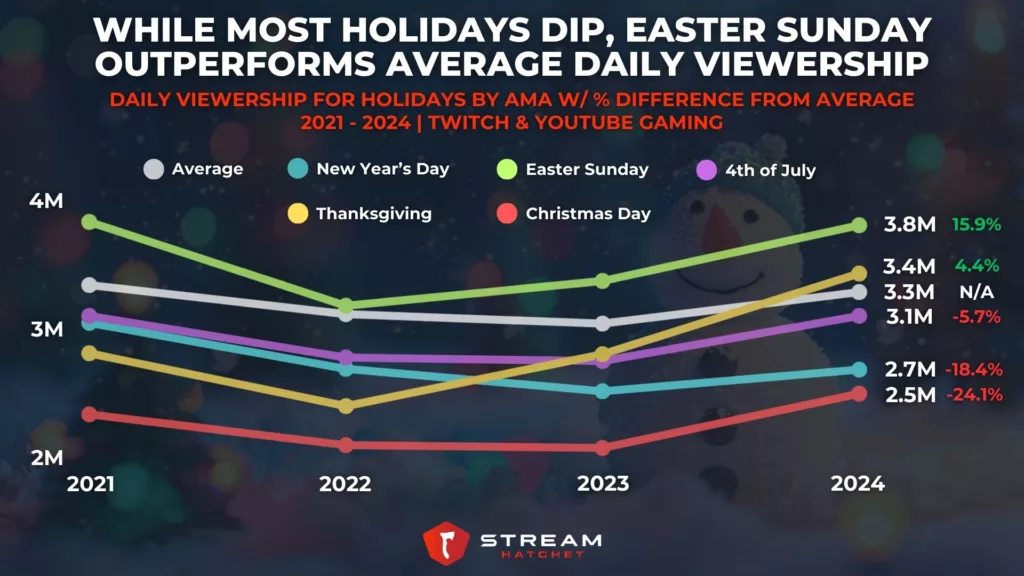
Looking back over the past four years in holidays, one obvious trend emerges: Almost every single holiday has a below average viewership on live streaming for its respective year. Christmas is the worst affected, having 24.1% less viewership than an average day in 2024. The only exception to this rule seems to be Easter Sunday, which has consistently outperformed the average day in its respective year and pulled in an average minute audience (AMA) 15.9% higher than average in 2024. In fact, Easter Sunday even pulls in a higher AMA than a typical Sunday each year (except 2022), with 4.3% higher AMA in 2024.
This could be set to change, however, with another holiday quickly gaining popularity among the live-streaming community: Thanksgiving. In 2024, Thanksgiving managed to pull in a 4.4% higher AMA than the typical day – the first time it’s exceeded the average. Both Thanksgiving and Christmas saw a massive trend upwards this year, most likely helped by key live-streaming events like Kai Cenat’s Mafiathon 2. It’s possible that winter holidays are better suited to these kinds of indoorsy activities than summer holidays like the 4th of July.
Streamers are More Active at The End of the Year, but Viewers Tune Out
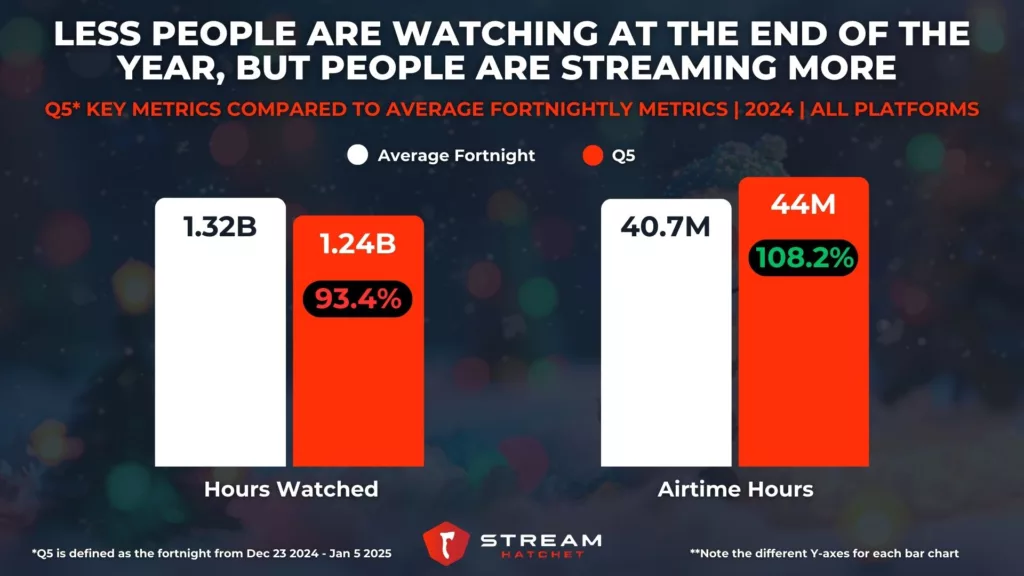
In other industries, the time surrounding Christmas and New Year’s is often treated separately from Q4 due to shifting consumer priorities, labelled Quarter 5 (Q5) instead. The exact dates differ depending on the industry, but for the purposes of our discussion here, we’re treating the fortnight from the 23rd of December 2024 to the 5th of January 2025 as Q5 in live streaming. Heading into Q5, the assumption is that the viewers spend more time on IRL family events and vacations, leading them away from live-streaming platforms. This is backed up by the data: In Q5 2024, hours watched across all platforms decreased by 6.6% compared to the average fortnight in 2024.
However, that isn’t the end of the story. Looking instead at streamer habits, it turns out that airtime hours actually increased by 8.2% compared to the average fortnight in 2024. In other words, streamers spent more time online during the holiday period despite presumably knowing that viewers aren’t as tuned in. There’s an apparent gap here between streamers having more time to pursue their hobby and viewers having other activities distracting them in Q5. While there are less viewers, the ones still tuning in are more likely to be engaged/loyal. This makes streaming during this time incredibly important for creating positive sentiment among one’s fanbase – especially for smaller streamers who might earn more subs during this time.
Celebrity, Collabs, and International Streams Dominate Q5
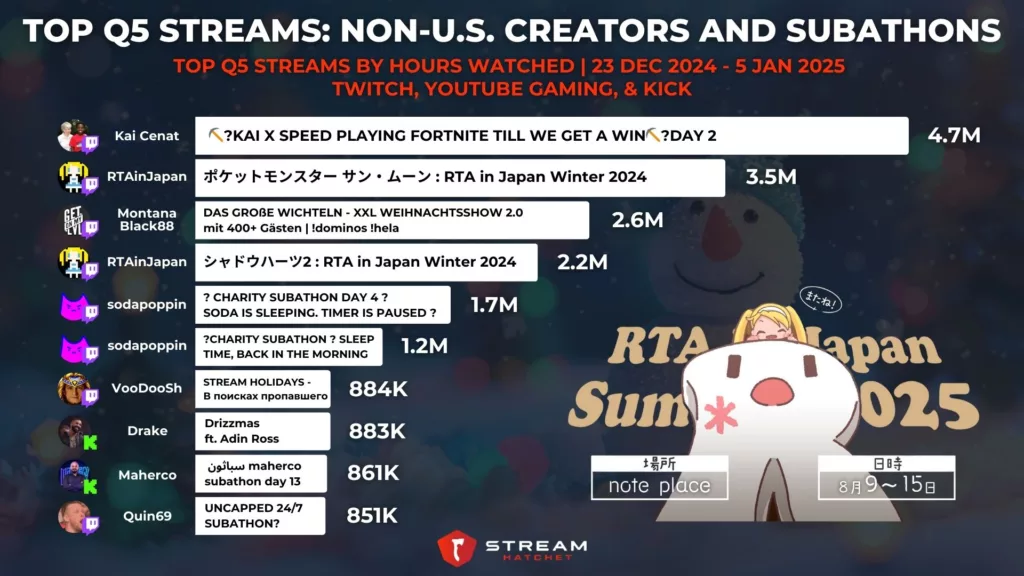
For brands looking to partner with streamers during this less predictable time of the year, it’s worth understanding which kinds of events have enough pull to keep viewers engaged during the holidays. In Q5 2024, the most popular event was RTA in Japan, a biannual speedrunning event that brought in 3.5M hours watched with its top session. No doubt the mostly non-U.S. audience for the event contributed to its ability to weather the expected drop in viewership over Christmas. A lot of other non-U.S. streamers rose to prominence in this time, like German streamer MontanaBlack88 and VooDooSh with 2.6M and 884K hours watched on their top streams, respectively.
Notably, Kai Cenat actually had the most watched session across all of Q5 thanks to his Fortnite collab with IShowSpeed, which brought in 4.7M hours watched. The two biggest streamers of 2024 managed to capitalize on the downtime between Christmas and New Year’s Day while their schedules were relatively free. Other Western streamers piggybacked off the recent popularity of Twitch subathon events, with sodapoppin and Quin69 both using their free holiday time on marathon streams. Celebrities continued to be popular as well, with Drake inviting Adin Ross onto his Kick channel for 883K hours watched (although there is some ongoing controversy regarding Drake’s channel’s status).
With Thanksgiving and Christmas viewership up this year, it’s possible more people are turning to live streaming during the colder holidays. Stream Hatchet will be watching to see if this trend continues, but in the meantime it’s worth brands thinking about how they can use this downtime in their own schedules to stand out and reach new audiences in the lead up to Q5 2025.
To keep up to date with the latest industry-wide trends on live streaming, follow Stream Hatchet:


